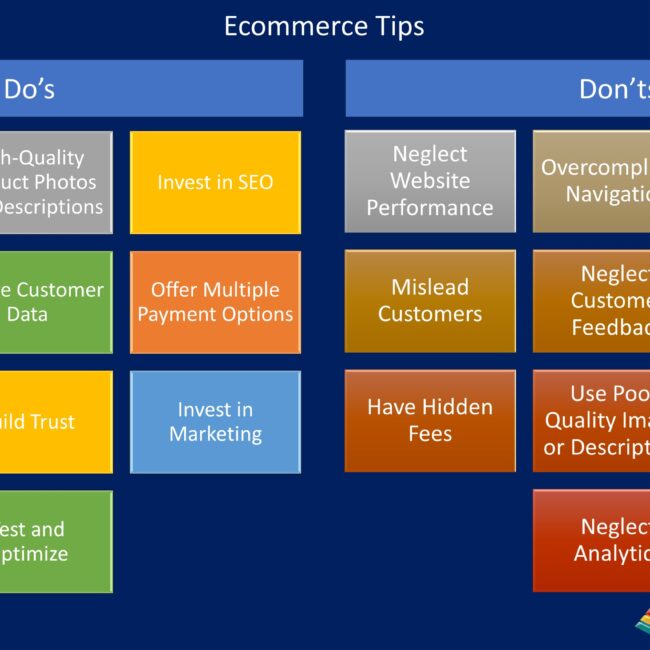
25 Useful tips for eCommerce business
Running a successful e-commerce business involves various strategies and practices. Here are some useful tips for e-commerce business owners:
- User-Friendly Website Design: Ensure your website is easy to navigate, visually appealing, and responsive to different devices. A user-friendly design can improve the overall customer experience.
- High-Quality Product Images and Descriptions: Use high-resolution images and detailed product descriptions to help customers make informed purchasing decisions.
- Fast Loading Speed: Optimize your website for speed. Slow-loading websites can lead to high bounce rates and lost sales.
- Secure Payment Options: Offer a variety of secure payment options to build trust with customers. Popular payment gateways like PayPal and Stripe are good choices.
- Mobile Optimization: Make sure your website is mobile-friendly since a significant portion of e-commerce traffic comes from mobile devices.
- Search Engine Optimization (SEO): Implement SEO best practices to improve your website’s visibility in search engines and attract organic traffic.
- Content Marketing: Create valuable, informative, and engaging content, such as blog posts and videos, to attract and retain customers.
- Social Media Marketing: Utilize social media platforms to connect with your audience, showcase products, and run targeted ad campaigns.
- Email Marketing: Build and maintain an email list to send out newsletters, promotions, and updates to your customers.
- Customer Reviews and Testimonials: Encourage customers to leave reviews and testimonials, as positive feedback can build trust and influence potential buyers.
- Customer Support: Offer excellent customer support through multiple channels like live chat, email, and phone to address customer inquiries and issues promptly.
- Clear Return and Refund Policy: Have a transparent and customer-friendly return and refund policy to boost confidence in your products.
- Cross-Selling and Upselling: Suggest related products to customers during the checkout process to increase the average order value.
- Personalization: Use customer data and behavior to offer personalized product recommendations and content.
- Abandoned Cart Recovery: Implement strategies to recover abandoned carts, such as sending reminder emails or offering discounts.
- Analytics and Data Analysis: Regularly analyze data to understand customer behavior, sales patterns, and areas for improvement.
- Inventory Management: Keep track of your inventory and implement systems to prevent overselling or stockouts.
- Shipping and Fulfillment: Offer flexible shipping options and keep customers informed about order status and delivery times.
- Customer Loyalty Programs: Create loyalty programs to reward repeat customers and encourage them to return.
- Market Research: Stay informed about industry trends, competitors, and customer preferences to adapt your strategies.
- Security: Invest in website security to protect customer data and build trust. Use HTTPS, SSL certificates, and PCI compliance.
- Legal Compliance: Ensure that your e-commerce business complies with local and international e-commerce laws and regulations.
- Feedback and Continuous Improvement: Collect feedback from customers and use it to continually improve your products and services.
- Scaling and Expansion: Consider expanding to new markets or product categories as your business grows.
- Networking and Partnerships: Build relationships with other businesses, influencers, and organizations to expand your reach and customer base.
Remember that e-commerce is a dynamic field, and staying up-to-date with the latest trends and technologies is essential to maintaining a successful online business.




